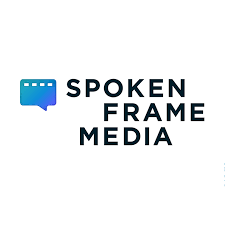The modern buyer journey is basically just a squiggly line.
That might sound like a strange conclusion in our world of linear marketing flowcharts and funnels, but just think about it:
Before you make a purchase, you probably don’t usually go from realizing you need a product to considering a couple of different brands to hitting “buy now.” The process is more nuanced than that.
- For one, if you’re like most consumers today, once you decide you need a product, you probably toggle back and forth between exploring and evaluating different brand options several times before you finally make your decision. (Can you see the squiggly line now?)
- You also probably do pretty extensive research on the item you’re in the market for before you even want to start thinking about brands. And you’ll definitely be doing all your research before you make an appointment with a sales rep if you’re buying something big like a car.
- And when the time comes for brand selection, there’s a good chance you’ll go with the company you remember hearing about ages ago from your friend or from those string of funny advertisements – instead of the brand that you stumbled upon halfway through your research. That new brand’s product might be better, but the familiar just feels more reliable.
The bottom line: Whether you found yourself internally nodding along with those 3 assumptions I just made about you or not, we can all agree that the way consumers think is constantly getting more complex, unpredictable, and difficult to define. So, we as marketers must also change the way we approach the buyer’s journey.
Dave Florin, President and CEO of Hiebing, joined AMA-Madison’s Craft Marketing event on February 27 to share his insights on this very topic. Read on to get his advice on the top 4 things marketers need to know to stay agile in today’s complex consumer landscape:
Rethinking the Consumer Journey: 4 Tips to Stay Agile in Today’s Complex Consumer Landscape
1. Embrace the Multiplicity of Media Touchpoints
15 years ago, you could realistically buy a certain number of eyeballs and only have to pull 10% as many levers as you’d need to pull today to get those same eyeballs on you. The game is far more complex, but we have to play it to get our story told. Platforms also used to be more static, so if you bought a radio commercial, you could predict how it would look and about how much money it’d generate.
But today, our go-to platforms like Facebook constantly change their rules and algorithms, so we can only estimate our ads’ potential impact. Dave explained that due to this reality, our marketing plans need to make room for multiple touchpoints throughout the consumer journey. We can no longer count on one fantastic ad to reel in loyal customers. And that’s why Dave firmly believes it’s no longer viable to apply individual tactics, or touch points, to each stage of the buyer’s journey. Instead, we need more touch points, and it’s not worthwhile to agonize over which tactic will directly correlate to any particular buyer stage, as each touch point has more of a cross-pollination effect than we might assume.
2. Understand the Vitality of the Pre-Trigger Phase
Going back to that third assumption I made about you earlier, Dave revealed that if a consumer is aware of a certain brand’s product prior to realizing they needed that product, the odds are that 70% of the time, you will choose that familiar brand. That’s why the span of time before a consumer realizes they need a product, also known as the pre-trigger phase, is so precious for us marketers. Getting into people’s awareness early enhances credibility and trust.
And Dave shared that there’s both a downside and an upside regarding pre-trigger awareness: On the downside, pre-trigger awareness tactics are the least easy to measure. But on the brighter side, 70% of the time, these tactics are going to get you the transaction down the road. In other words, these efforts are well worth pursuing, but it might be harder to get your peers or leaders on board to allocate parts of your budget towards them.
Dave has observed that a common misconception for marketers is that they can realistically get in the game after a trigger has already occurred. But the reality is, you’re playing catch-up from that point on. It’s a risky assumption, especially in the B2B world, where you’ll probably need to win over a room of decision-makers versus a single consumer. Brands that have built-in awareness have automatic credibility and trust that makes persuasion far easier. You’ve heard the cliché, “Nobody got fired for buying IBM.” It’s true for a reason – don’t overlook this golden opportunity to gain your prospects’ trust.
3. Be Strategic When Targeting the Exploration and Evaluation Phases
Dave emphasized that marketing to the “consideration phase” is too broad to be effective. Instead, we need to break this phase down into two phases: exploration and evaluation. This way, you can provide more targeted messaging to folks in both boats.
When it comes to the exposure phase, your marketing content’s job is solely exposure. That is, it’s not time to pull out all the stops and explain why your product will help them. They don’t even know they have a need yet, so all we can do during this phase is let them know we exist.
Then, after the target experiences a trigger and starts exploring, we finally have a problem to solve and questions that need answering. Still, we don’t want to “be sales-focused” yet in our messaging. Instead, slowly develop your relationship with the target by aiming to be helpful to them. When the time comes for them to get more serious about buying, or the evaluation phase, they won’t think of you as the product pusher. They’ll remember you as the helpful source of knowledge, and they might even trust you. With this mindset, they’ll be more receptive when you finally start showing them what you and your product does best. That’s exactly where you want to be – that’s how you get in with them.
4. Create Tailored Content, and More of It
Even though the advertising world can’t carry the weight of our marketing plans anymore, it’s still a critical partner to content. Dave explained that you’ve got advertising at one end, and content on the other. And if you’re not pulling both levers simultaneously, you have a serious gap in your communication. Plus, as we discussed in tip #3, your content’s messaging must be tailored differently at the exploration phase versus the evaluation phase: they cannot be lumped together.
On the question of “How much content should I create?”, Dave pointed out the phenomenon of content proliferation. As he said, Audrey Hepburn achieved world-class fame and acclaim creating 2 films a year, then Oprah created 182 TV episodes a year and remained on everybody’s mind, and today, top influencers like Victoria Paris created over 22,500 pieces of content in the past two and a half years, and has become a well-known 24-year-old making tens of millions of dollars.
We’ve gotten to this place because content is what’s working right now. It’s what we as consumers, the target markets, are consuming, and it’s increasing at dramatic rates. So, as brands, we need to pay attention to that and figure out how to keep up best we can. As intimidating as it sounds, Dave explained that the quality of content doesn’t necessarily need to be high-budget professional. Each video, or touchpoint, is more fleeting, so we need to be efficient. His advice: Find really good media partners who fit your needs best, and know that story consistency matters more than the consistency of your content’s “look and feel.” What looks good on a TV ad won’t directly translate to a TikTok or Google ad. But if your story connects and keeps people’s attention, you’re headed in the right direction.
Dave also recommends diving deep into content on a variety of social media platforms, especially LinkedIn and TikTok. Although all generations live on social media platforms and are increasingly influenced by the content they see, it’s worth noting that gen Z is making a lot of decisions today and they’re searching using TikTok more than Google. Depending on your target demographic and offerings, this may be worth tapping into, especially if what you’re selling can be effectively marketed as an experience. That’s where the magic of video can truly differentiate your brand.
A Call to Adapt and Innovate
The marketing landscape is evolving at breakneck speed, driven by changes in consumer behavior, technology, and media. As marketers, we need to embrace this complexity by adopting a more dynamic, nuanced approach. This means prioritizing compelling, multi-touch storytelling and harnessing the full spectrum of content and social media to engage with consumers at every stage.
One thing’s for sure: The future of marketing demands our full attention, creativity, and a willingness to venture into uncharted territories (and maybe even squiggly lines) with a curious, open mind.
See You at the Thirsty Goat for March’s Craft Marketing
Craft Marketing invites you to its next live in-person event at the Thirsty Goat in Fitchburg at 4:00 PM on March 26th, “Making Waves: Creating Lake Ridge Bank’s New Brand” presented by Paul Hoffmann. You’ll get to network with your peers and enjoy a delicious beverage of your choice.
You can learn more and register here.
Thanks to our sponsors:
About the Author
Kara Martin, Content Writer at Naviant, specializes in written B2B content, from case studies to blogs and beyond. She transforms complex technical information into compelling, data-driven content that helps organizations turn their digital transformation goals into a reality.




